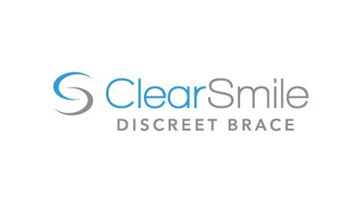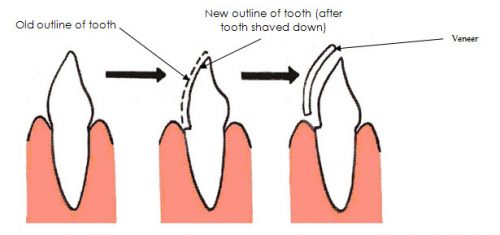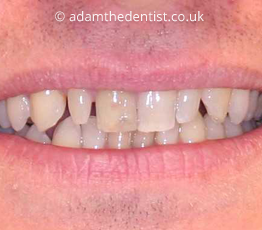Techniques to straighten crooked teeth – Some of these may surprise you
Very often people wonder how many different ways are there to straightening crooked teeth, in this blog post we will take a look through the various options, including some of them you may not have thought about!
By way of a brief introduction, which we will expand on, the ways to straighten crooked teeth are as follows:
- Orthodontics
- Conventional fixed braces, these can either be metal ceramic.
- Clear aligners
- Removable orthodontics
- Invisible orthodontics, usually on the lingual surface (tongue side) of your teeth
- Dental bonding
- The dentist places a small amount of composite resin over the surface of the crooked teeth/tooth to rebuild it into straight alignment
- Dental veneers
- These can be very useful to straighten crooked teeth if the teeth also need rebuilding with shape or colour
Let’s look at each of these in more detail.
Orthodontics
Most dental practices, including our Dentist in Southend will offer a range of orthodontic treatments to help you.
Why are there so many different types of braces?
It all comes down to 2 factors:
- Offering you choice regarding the speed of treatment, look of the braces and cost.
- Clinical indicators which determine which orthodontic brace will work best in any given clinical situation.
Let’s take a quick walk through some of the orthodontic systems available today.
Invisalign
 Invisalign uses modern 3-D scanning and printing technology to create virtually invisible clear liners. Your dentist plans your entire treatment before it begins and works out the final position of your teeth. A series of clear liners are then produced. You wear each aligner for two weeks approximately, each aligner moves the teeth a small amount towards their final destination.
Invisalign uses modern 3-D scanning and printing technology to create virtually invisible clear liners. Your dentist plans your entire treatment before it begins and works out the final position of your teeth. A series of clear liners are then produced. You wear each aligner for two weeks approximately, each aligner moves the teeth a small amount towards their final destination.
Treatment generally takes between one and two years, depending on the severity of your case.
Because Invisalign is virtually clear many people will not know you are having orthodontic treatment making it an excellent option for adults. There are however some more serious clinical situations with teeth that are in particularly difficult places which Invisalign is unable to cope with. Some patients may also prefer more rapid treatment and opt for a different race system.
Fixed ceramic braces
These are a modern twist on the traditional train track braces worn by so many people in years gone by. Whilst the metal braces are still used occasionally many people prefer these ceramic braces as they have a far better cosmetic appearance. Complex treatments can be undertaken with fixed ceramic braces as they offer your orthodontist complete freedom to use a variety of wires, brackets and techniques to move your teeth.
 Inman aligner
Inman aligner
This is an orthodontic system developed by an orthodontist in America, he created a new orthodontic appliance which pushes on teeth from two different directions at the same time by using a combination of springs. By pushing into different directions it is possible to straighten rotated and crooked teeth very rapidly.
The Inman aligner also only focuses on the cosmetic front teeth, because these teeth have smaller routes it is possible to move them much more rapidly them back teeth. This means treatment times with the Inman aligner can be anywhere from 9 to 16 weeks, much faster than any other orthodontic system.
The Inman aligner does however use metal springs and so can sometimes be considered more visible than some of the other orthodontic systems.
 Invisible orthodontics
Invisible orthodontics
The only way to truly have invisible orthodontics is to completely hide all of the braces from the fronts of the teeth. Lingual orthodontics does this by placing the brackets and wires on the tongue side of your teeth. To do this the brackets are custom made for each patient to be as flat and unobtrusive as possible. It does sometimes take patients a little while to get used to lingual orthodontics but they can give great results on a wide range of clinical situations.
Dental bonding
Dental bonding is the same technique the dentists use for in surgery white fillings. Rather than the material being placed in a back tooth to fill the cavity that same composite resin can be used on a front tooth to build any rotated section of the tooth forwards to be completely in line.
Dental bonding like this does need to be maintained and can, in some cases begin to discolour if very strong coloured food and drink is consumed.
It is also often the lowest cost option but would usually only be used on a couple of rotated teeth, rather than many rotated teeth.
 Dental veneers
Dental veneers
Dental veneers often require reduction of the front surface of the tooth in order to receive the new veneer. Most dentists will prefer to keep as much natural tooth as possible which is why they will often opt for orthodontics to straighten crooked teeth.
Veneers can however be extremely useful if the teeth are particularly dark or have misshapen or missing areas.
The following image shows just how much dental veneers can be used to rebuild teeth, lighting teeth and straighten crooked teeth or at the same time.


We hope you enjoyed this brief article, please do let us know your comments